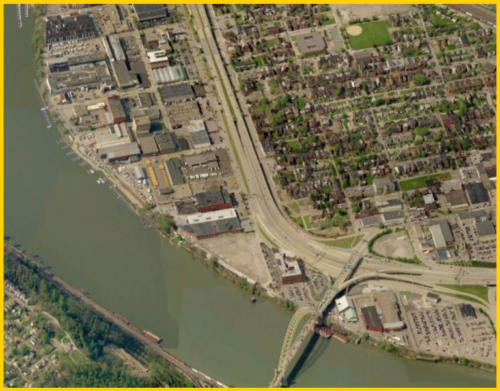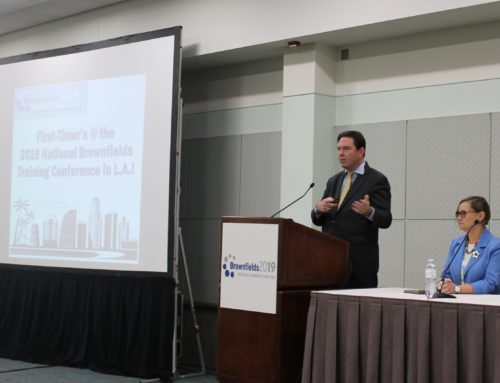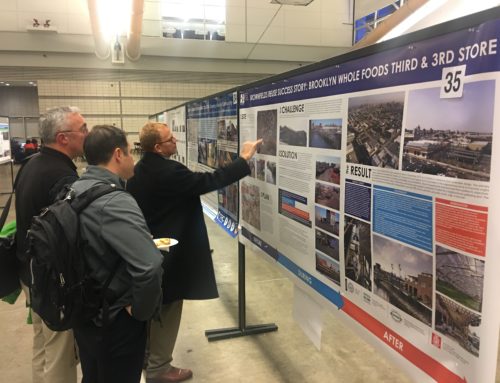Since 2003, ICMA and the U.S. Environmental Protection Agency (EPA) have jointly organized the National Brownfields Training Conference.
The conference regularly attracts local government leaders, developers, end-users of redeveloped brownfields sites, and investors. What draws leaders to discuss this important topic? Learn more about brownfields below.
What are brownfields?
Brownfields are rural or urban industrial commercial sites that are abandoned or underused because of real or perceived contamination. Communities across the country face the challenge of putting these idle sites back to work, from old industrial cities with thousands of acres of abandoned factories to rural villages built around derelict mines or timber mills. Brownfields are a valuable community resource that, through redevelopment and reuse, could easily bring important benefits to many economically depressed communities or serve as the centerpiece in comprehensive redevelopment strategies.
The EPA has estimated that there are several hundred thousand brownfields sites around the United States, many of which are inhibiting neighborhood and community revitalization.
Why are brownfields important?
According to the EPA, “cleaning up and reinvesting in these properties increases local tax bases, facilitates job growth, utilizes existing infrastructure, takes development pressures off of undeveloped, open land, and both improves and protects the environment.”
Tad McGalliard, ICMA Director of Research and Development, writes in a December 2017 Public Management article Brownfields as a Mainstream Investment, “It can be argued that one of the most innovative and successful outcomes to emerge from the past 30 years of sustainability are the policies, programs, public-private partnerships, and more that have been created to help clean up and reuse brownfields.” He explains that local government community redevelopment goals help with local planning and citizen engagement, and financial tools help support redevelopment goals.
McGalliard shares that ICMA survey data show managers have these reasons to believe communities should invest both human and financial resources in brownfields actions:
- Protect the environment as well as the public health of local and regional residents.
- Eliminate blight and increasing local tax bases.
- Create jobs and economic opportunity.
- Prep land for new commercial activities to develop.
- Create more livable communities.
What are the benefits of the EPA Brownfields Program?
The Brownfields Program creates many benefits for local communities, as highlighted below.
- Projects leveraged $16.99 per EPA dollar expended
- Leveraged more than 138,643 jobs nationwide
- Can increase residential property values 5% – 15.2% near brownfields sites when cleanup is completed
- Can increase local tax revenues when cleanup is completed
Do you have expertise with brownfields revitalization? Submit a call for ideas for the conference today!








